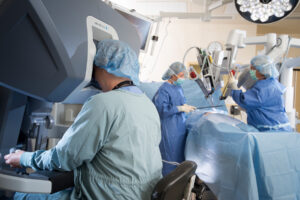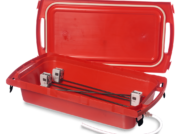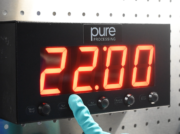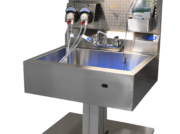
The Recent Evolution of Surgical Devices
As long as humans have been around to get ill or hurt, surgery has existed in one form or another. From the inventions of x-rays, anesthesia, antibiotics, and importantly, sterilization practices, surgery has also evolved with us. To some, surgery is the oldest form of art and innovation.
These surgical advancements come with unintended consequences for those meant to keep up with them, however. Sterile processing and gastroenterology departments, for example, struggle to advance their processes alongside the rapidly evolving techniques in surgery and the devices that enable them.
Three recent examples of surgical evolutions demonstrate this struggle:
Robotic surgery

Robotic-assisted surgery (RAS) is the definition of the modern-day operating theater. Software and computer programs allow minimally invasive surgical (MIS) procedures with less exposure for operating room staff, and typically fewer complications for patients.
Robotic devices, however, can prove difficult for some sterile processing departments to accommodate. With many fine surfaces on the disc face, adequately brushing can be challenging. The newest robotic technology features instrument shafts with multiple elbows and wrists, further complicating brushing and visual inspection. Certain devices may have up to three ports or require specific pressures when flushing. Robotic devices are typically long, meaning reprocessing sinks and assembly tables feel and function smaller, if the devices fit at all.
While impressive technologies, robotic devices introduce unique challenges for many reprocessing departments.
Flexible endoscopes
Flexible endoscopes have long been both brilliant and complicated in their design. Extra-long, with built-in cameras, wire cables, multiple channels, and video imaging systems, they are incredibly intricate and delicate. Some of the newest flexible endoscope models include permanently integrated balloons at bending sections, or removable distal end caps to better enable access behind mechanical elevators.
Scopes are easily damaged through simple reprocessing mistakes or oversights. Too much enzymatic detergent, over-coiling, using the wrong brushes, leaving the soaking cap off… it’s easy to make honest mistakes, especially under time constraints.
Gastroenterology and sterile processing staff should be careful to avoid scope damage, but also bear in mind the lengthy nature of scope reprocessing. Some scope manufacturers have cleaning IFUs with over 100 steps. Time is money when reprocessing these scopes, both in preventing damages and ensuring patient safety for a highly turned over device.
Powered devices
Powered devices look straightforward to clean. Their deceiving appearance hides many challenges: batteries, cables, pneumatic devices with hoses for compressed gas, and components that disassemble require careful attention to detail during cleaning. Being cautious to avoid fluid invasion in powered surgical devices, as well as remembering that the attachments and subcomponents are complex devices themselves, are just some considerations as advancements in orthopedic surgery evolve.
U.S. Service members with the Joint Task Force (JTF)-Bravo mobile surgical team perform a surgical procedure during a medical readiness training exercise in Puerto Cortes, Honduras, Feb. 25, 2014.
Bringing innovation into instrument reprocessing
Surgery must advance just as diseases do, and these advancements have saved countless lives. For sterile processing and gastroenterology professionals, asking questions and continuous evaluation of processes and procedures will help keep instrument reprocessing advancing too.
Innovation is a muscle best kept in shape: involve others to contribute new ideas, problem solve, and evaluate current practices to continue fueling innovation in your department. Test new concepts, incentivize innovation when possible and give technicians and nurses support from leadership when new ideas come the front line.
These considerations, among others, can help sterile processing and gastroenterology staff stay ahead of the surgical evolution curve and continue keeping patients safe
As surgical devices evolve, so do sterile processing tools and practices, but some fundamentals never change. Learn about the three pillars to effective lumened instrument cleaning, and how these three timeless practices ensure proper reprocessing outcomes.






